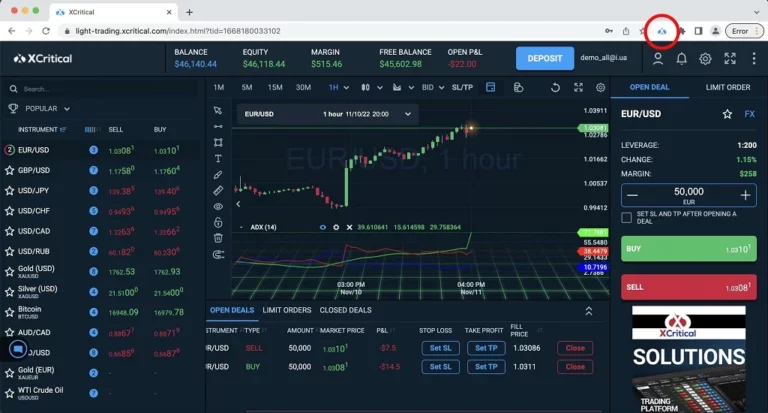What Is Impermanent Loss? The Method To Manage It In Defi Liquidity Pools
The loss is “impermanent” as a outcome of if the value of your belongings goes again to its preliminary value, you won’t endure impermanent loss. On the opposite hand, when you withdraw your funds from the liquidity pool when the worth of your deposited belongings have modified, your loss will turn out to be permanent. Although it could appear to be you made more profit, your gains could also be lower than the base shift in value of your tokens. Due to the value increase, the value of your deposited ETH elevated from $500 to $800 whereas your BTC assets remained at $500.
- At this point, if the LP decides to withdraw their liquidity, the impermanent loss turns into permanent.
- Lobster permits users to learn from liquidity providing without having to worry about impermanent loss.
- Liquidity pools are an integral part of DeFi and play a vital role in yield farming, which involves offering liquidity to swimming pools in trade for rewards, typically within the form of extra tokens.
- As tokens are exchanged in the pool, the quantity of tokens adjustments, leading to a concept known as “price influence,” where each purchase affects the worth of the bought token.
- Although the liquidity provider, who supplied each property of the pair in the pool, earns a payment for each swap, they, on paper, take a loss due to this token appreciation.
- In this instance, you skilled a $500 impermanent loss by providing liquidity to the pool.
In the case of highly volatile property, however, traders tend to offset their impermanent losses with the yield generated from the liquidity pool. While IL presents a danger, it may be very important note there are also potential rewards to liquidity provision. In fact, IL could also be a trade-off for the potential rewards that liquidity provision provides.
How Does Impermanent Loss Occur?
In this case, arbitrageurs revenue on the expense of liquidity providers, who technically personal less XRP than they did earlier than. Investing in a liquidity pool with secure coins is one potential technique as a outcome of the volatility of those cash are low by design. A yield aggregator that reinvests your fees and income can even cut back the influence of impermanent loss. In most liquidity pools, an Automated Market Maker (AMM) algorithm is used to maintain the pool’s general worth by adjusting token prices in response to produce and demand. As tokens are exchanged in the pool, the amount of tokens adjustments, leading to an idea generally identified as “price impact,” the place each purchase impacts the price of the purchased token. The idea of impermanent loss becomes related when the assets’ prices fluctuate, causing a difference in worth between being a liquidity provider and holding the belongings exterior the pool.

For this purpose, the liquidity supplier must play an lively role in keeping observe of the buying and selling worth and manually rebalancing their liquidity provider commerce vary to maximise rewards. Impermanent loss happens when the price of belongings deposited in a liquidity pool modifications from the time they have been deposited. This creates a distinction in worth compared to holding them exterior the pool.
Liquidity Pool Impermanent Loss And Its Influence On Yield Farming
The AMM enables a user and a sensible contract to change property immediately by eradicating all middleman processes. Missing out on this opportunity for extra B at a better price outside the liquidity pool is an impermanent loss. Meanwhile, the opposite would be true throughout a worth decrease of 1 token. For example, if the value of the belongings in the pool decreases by 10%, but the worth of the LP tokens solely decreases by 5%, the user may have incurred a 5% impermanent loss. If ETH’s worth has increased, they would receive extra of the altcoin and fewer ETH compared to their preliminary deposit.

By providing liquidity to pools, a dealer contributes to the overall liquidity in the crypto market and facilitates environment friendly trading. This, in turn, can outcome in incomes rewards like trading fees or extra tokens. Decentralized Finance (DeFi) is a nascent sector that’s nonetheless quickly growing. On prime of that, a lot of liquidity swimming pools provide further incentives for LPs by offering liquidity mining programs.
Liquidity Aggregation
An arbitrageur notices the value distinction between Coinbase and Uniswap and sees that as an opportunity for arbitrage that’s basically a chance to make a profit. Impermanent Loss refers to the theoretical lack of value a liquidity supplier can experience when pooling their belongings. So, impermanent loss happens when the ratio between the 2 belongings within the pool adjustments. Impermanent Loss (IL) is a risk faced by Liquidity Providers once they present their property to a liquidity pool. For this actual purpose, Genius Yield is building the Smart Liquidity Vault.

Nothing contained herein shall constitute a solicitation, advice, endorsement, or offer by Crypto.com to take a position, purchase, or promote any cash, tokens, or other crypto belongings. Returns on the buying and promoting of crypto property may be topic to tax, including capital features liquidity mining pools tax, in your jurisdiction. Any descriptions of Crypto.com products or options are merely for illustrative purposes and do not represent an endorsement, invitation, or solicitation. As we will see the LP would’ve had $23.41 more if they simply held their assets without offering liquidity.
So as extra ETH is being purchased from the pool, the upper the price of ETH becomes. The arbitrageur buys cheaper ETH on Uniswap till there is not any extra value discrepancy between the exchanges. Have you ever supplied liquidity to a liquidity pool just to grasp that some of your cash have gone missing?
Select A Single Asset Pool
If the asset prices return to their original ranges, the impermanent loss can be reversed. The more volatile the LP tokens are, the upper the possibilities of impermanent loss. That stated, if an investor chooses LP tokens with decrease volatility, the price adjustments is not going to be important, saving them from potential losses. Given the right strategy, the rewards earned from liquidity provision can offset IL and probably generate further returns. However, it is essential to rigorously assess the dangers and rewards before engaging in liquidity provision.

It’s necessary to know impermanent loss if you need to provide liquidity as an automated market maker. Unlike traditional monetary markets that rely on market makers and takers, DeFi relies on automated market makers for liquidity. One of the inherent design traits in automated market makers is what’s often identified as impermanent loss (IL). While impermanent loss is all the time potential in liquidity pools, you presumably can handle it and mitigate a few of its risks. The liquidity pool employs an algorithm that ensures fixed availability to purchase an asset, regardless of worth fluctuations, time of day, or the presence of patrons or sellers to satisfy present calls for.
It represents the potential disparity in positive aspects in comparison with simply holding the belongings. The extent of impermanent loss publicity depends on the magnitude of worth adjustments within the pool. Arbitrageurs will proceed buying the token till there’s equilibrium with exterior market rates.
Essentially, it functions as a pool of funds comprising the assets you purpose to trade for, facilitated by smart contracts, and each transaction throughout the pool incurs a tax. Although the liquidity supplier, who supplied each property of the pair within the pool, earns a fee for each swap, they, on paper, take a loss as a result of this token appreciation. This loss is “impermanent” until the liquidity provider redeems their token, turning it everlasting. This liquidity supplier with $1,000 within the liquidity pool will now have less of B than they might have had in the occasion that they have been simply holding the asset. If they determine to withdraw their funds from the liquidity pool, at this point, it will imply getting the identical $1,000. While IL is an inherent danger to traders when offering liquidity to pools, there are methods they may employ to reduce their publicity and mitigate its impact.
You might acquire entry to such products and services on the Crypto.com App. Mark contributions as unhelpful should you find them irrelevant or not useful to the article. To get a clearer picture of how this happens, here’s a scenario involving a token’s price enhance. In blockchain, a hash is the outcomes of a cryptographic operate that takes an enter and produces a fixed-size string of characters.
It is a yield optimizer built above the DEX for autonomously managing liquidity positions using Artificial Intelligence and Machine Algorithms developed by the Genius Yiel team. It will execute varied trading methods based mostly on the user’s predefined risk tolerance, expected returns, and time-frame. By putting stop-loss limit orders on the assets held within the pool, LPs can offset the effects of impermanent loss by a sure degree https://www.xcritical.com/ by selling an asset before it drops too much in worth. Learn about Impermanent Loss, a vital concept in DeFi liquidity swimming pools, and tips on how to navigate and leverage it. Impermanent loss is identified as impermanent as a end result of at this point the LP lost $23.41 only on paper. If the LP doesn’t withdraw their liquidity and the value of ETH goes again to $500, the impermanent loss is cancelled again to 0.
This can be why Curve’s liquidity swimming pools, or to be more generic, all the liquidity pools that maintain stable assets normally attract way more capital than the pool with non-stable property. When you deposit funds into a liquidity pool, you become a liquidity provider, and as more people trade with the pool, the transaction fees go to the liquidity suppliers. However, as the pool attracts more members, the share of charges per supplier decreases. With increased funds within the pool, it becomes more resistant to price fluctuations, resulting in cheaper price impression and less affect from giant patrons.
To supply liquidity to a 50/50 pool, the LP has to supply an equal worth of each tokens to the pool. Several informative articles elucidate the concept and supply examples, yet they persistently current a method for impermanent loss without providing its derivation. Lobster allows users to benefit from liquidity providing without having to fret about impermanent loss. A crypto airdrop is a marketing campaign where a project will deliver free crypto tokens or coins to taking part users’ wallets.

Add Comment